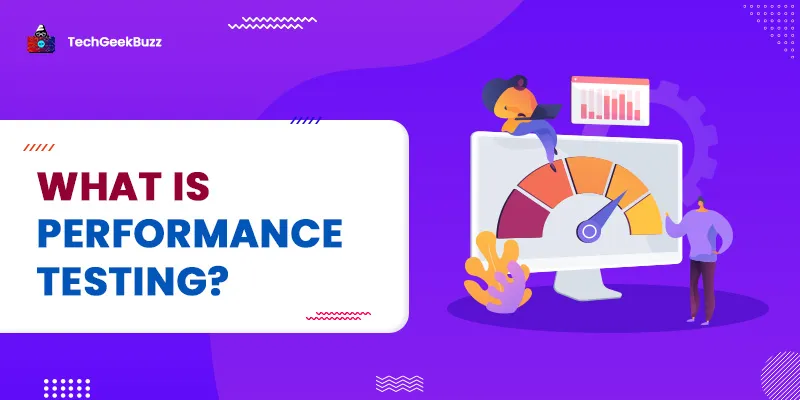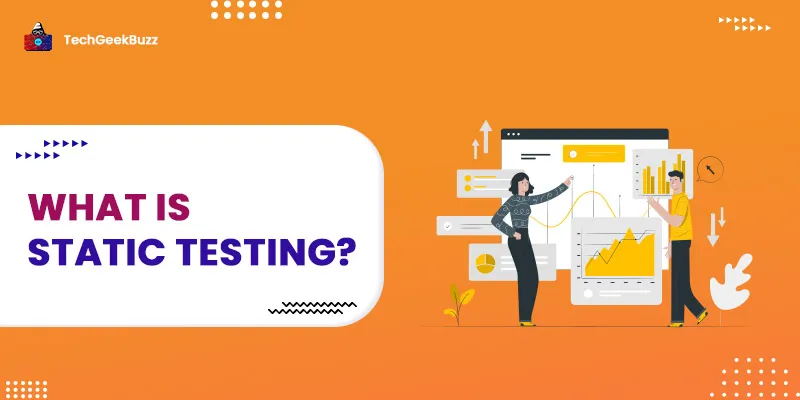Imagine a software product with excellent performance, on-point functionality, and optimum loading and processing time. This often is a result of rounds and rounds of scanning, detecting, and solving errors. The process is called debugging.
In the software world, these errors are known as bugs. These can create havoc in software programs and can halt or make a glitch in performance. The presence of bugs in software is not so imaginary and is common for programmers and developers.
Sometimes, a bug also disbalances the whole algorithm and logic of a program . What do the developers do when they encounter a bug in their program? They resolve the bugs. Sounds easy? Though it’s not most of the time. Let’s understand the whole process of resolving bugs in a software program.
What is Debugging?
Debugging or bug removal is vital for ensuring software performance and stability. Every software or application program, before its launch and even afterward, undergoes rigorous tests for performance, functionality, and maintenance. The presence of any bug in the system can halt or affect the software’s performance and work in so many ways. Programmers or developers often run multiple sophisticated tests on software to make sure no bug escapes software testing .
This elevates the quality and operability of the app, thereby mitigating any downsides. Debugging or locating and identifying bugs in the software and further resolving them to ensure software with optimum functionality is paramount for software products and often, it starts with the initiating steps of coding for an app and runs throughout the entire development cycle.
But it is not as easy and quick as it sounds. Debugging is a multi-step process and often needs professional hands to implement the basic principles. To understand how debugging works, we must look into the types of bugs programmers/testers encounter.
Type of Software Bugs
Programmers check for possible bugs (also called programming errors), anomalies, incorrect syntax, unusual elements, etc. in the code. A program can have the following types of bugs:
1. Syntax Errors
Coding involves writing code in a very standard and specific way, called the programming syntax, and that's where the bugs hide. Syntax errors are little or massive code language errors that can exert little to significant anomalies in software. In worst cases, they can even halt the complete software functionality. These errors are generally identified by the compiler and further reported via error messages. The error message identifies the error’s cause and explains that with the line number to target it specifically. This helps ensure proper syntax before compiling the whole program.
2. Logical Errors
The algorithm holds the whole software intact, and if the algorithm has a logical error, immediate fixing is required. Logical errors are often difficult and cumbersome to fix and need a close examination of algorithms and insights into the working of the algorithms. In case of having bugs in difficult algorithms, when the comprehension is quite tough and seems impossible, writing the whole algorithm again from the start with a better and managed formulation helps and fixes bugs efficiently.
3. Implementation Anomalies
Sometimes, the whole algorithm of the software and syntax seems fine but still, there emerges a bug. It may be the case of an implementation error. It happens due to some low-level data structures, internal representation invariants, and other significant reasons. To solve the implementation errors, generally, building discrete ADTs for each data abstraction assists. This separates the logic from wrong implementation and once the bug is isolated in ADT, calls to the repOK() function for further highlighting the incorrect characters causing errors.
4. General Typos
Another type of program bug can be due to typos or typing errors. Manual coding is prone to errors. The typos or incorrectly written syntax or characters often escape the auto-correct as well as checking rounds of the compiler. Even small typos become huge bugs and exert glitches in the software functionality. However, when identified, these can be easily and rapidly fixed. Once identified, there needs to be a specified approach for debugging to resolve and eliminate all possible bugs present in the program. Let’s understand the process of eliminating bugs and also various types of debugging strategies.
Debugging Process/Stages of Debugging
Debugging starts from the moment a developer starts coding for the program. The code’s syntax, algorithm, and logical flaws are all prone to anomalies and can cause significant errors in the final product. Here is a brief explanation of various debugging steps:
- Step 1 - Identify the problem and prepare a report of issues being encountered
- Step 2 - Assign and forward the report to experienced software engineers to know about the problem in detail and its possible repercussions.
- Step 3 - Start documentation, finding, testing, and modeling the flaws.
- Step 4 - Resolve the defect by using debuggers or by any other reliable and effective approach.
- Step 5 - Validate and check for corrections.
A proper debugging process can rectify the bugs thoroughly and solidify the entire software development cycle . Also, it assists in maintaining the functionality and performance of the software product.
Debugging Strategies
Debugging works with different strategies and follows no stringent procedure. On the other hand, there are some stable and preferable strategies helping programmers for years to successfully identify and fix program bugs. Often, the debugging method is adapted according to the type and severity of errors and the part of the program having bugs, and also on the functional effect of the bug. Here is a list of some common and robust debugging strategies widely followed:
1. Backtracking
This debugging strategy of detecting bugs involves starting from the point of the problem or issue that occurs in the software. Then finding out the core reason for the anomaly observed. The programmer scans the whole code once to identify and shortlist the possible and obvious errors.
2. Debuggers
Use debuggers to automate and accelerate the process of bug tracking and fixing. It can successfully and efficiently replace print statements and assertions. Using debuggers, one can set breakpoints in the program, step into and around the functions, inspect significant points in execution, and also eliminate the need for hefty log files.
3. Print Statements
These are programs to log the information. Though it is effective when the logged information is limited in case of hefty and huge information, print statements need automated scripts to function. These then report in concise and compact formats. To understand printed data, one can leverage visualization tools as well. For example, a graph visualization tool such as ATT's Graphviz can assist in debugging manipulated or bugged graphs in the program.
4. Assertions
This strategy checks on the properties and invariants the code relies on. It follows a general process, and then the program stops, and the bug is found to be at or around that point. This elevates the ease and speed of debugging. An example of assertion is the repOK() function that checks for representation invariants held at function boundaries of the program and these rounds of checks generally increase around the error-prone areas of the software code.
5. Simplification
This follows a basic approach to problem simplification. It works by eliminating or commenting out the parts of code that don't have relevance to bugs. After commenting out the unrelated parts, the code becomes simple and can be tracked easily by debugging methods. It works the same way as data handling when we cut massive data into simpler parts to scan it efficiently. As the code becomes simpler, with each step, the bug becomes detectable.
6. Binary Search
The above-mentioned backtracking strategy becomes cumbersome and also fails if the error is somewhere distant from the symptom. In this scenario, the divide-and-conquer strategy works to rapidly and systematically locate the bug.
7. Bug Classification
This approach has its root in our daily tasks. It suggests classifying the bugs present in specific categories and then approaching the fixing. Once the classification is done, solving or eliminating a bug from the class can handle or rectify all the other bugs of the same class, thereby mitigating the steps of the debugging process, saving time, and producing rapid results.
8. Remote Debugging
Remote debugging is a stringent and managed approach where the debugger and the program being debugged run on different systems.
9. Error Detection
Error detection tools are specialized tools for identifying and locating inaccuracies in the software code. These tools can be integrated for hassle-free error detection. This process further increases productivity and ensures the optimum functionality of the code.
Best Debugging Tools
1. Sentry
An efficient debugging tool, Sentry helps programmers and developers to detect and locate bugs in software code. It accelerates the process of bug fixing and mitigates the risks associated with the process. Its ability to detect, fix and optimize the code has made it a choice of around 1M developers and thousands of organizations of varied scales.
Advantages:
- Intuitive user experience.
- Can send real-time alerts for better information on bugs and errors of the program.
- Supports a varied range of SDKs.
- Supports .NET, Java, and other platforms.
- Provides a full stack trace of the program to work on.
- Rectified format of data representation.
- Comes with easy installation and configuration procedures.
Sentry also provides a free trial for understanding compatibility and functional constraints, if any. The paid plans start from $26 a month.
2. GDB
GDB is an open-source debugging platform for easy and rapid fixing of errors, anomalies, and bugs in the program. It is one of the debugging platforms having a rating of 10 out of 10 on TrustRadius. It can seamlessly work with C and C++ projects. GDB can assist in detecting bugs, solving breakpoints, and whatnot! The debugging tool can also help in assessing the values of internal variables and call functions without dependence on the program’s normal behavior. Its open-source model, robust performance, and valuable solutions make it a quality tool for debugging.
3. Augury
With a managed and easy-to-adapt user interface, Augury provides some valuable and quality features to consider for the debugging process. It is free and open-source, which further elevates its adoption in the market.
Pros:
- Provides inside visualization.
- Allows access to component graphs and permits developers to edit the properties.
- Shows the TypeScript code rather than the compiled JavaScript code.
- Lists the object dependencies and properties.
- Provides the routing information for the application.
- Efficient for Angular apps.
- Allows easy modifications to component states and emit events.
Cons:
- Maintenance needs effort.
- Other tools like IDEs and browser dev tools seem to be better alternatives sometimes.
Conclusion
Software released in the market goes through rigorous tests, and the process of debugging always goes parallel. Debugging in software testing is vital. Even a misplaced comma can exert massive functionality errors. Therefore, it becomes vital to scan the whole code if one wishes to develop an optimum, performant, and robust program.
A glitch in the back-end code, server connections, and database connectivity can cause hours of the rundown of program servers leading to bad impressions among the users. Thereby, running software with proper and regular debugging routines is paramount. Some programmers use a traditional approach for debugging. While some others, on the other side, leverage professional debugging tools. Whatever approach is adopted, the bugs need to be removed and resolved at the earliest.
People are also reading:
![What is Debugging? [Definition] - Types & Techniques](/media/new_post_images/What-is-Debugging.webp)


![What is Waterfall Model? [Phases, Pros, & Cons]](/media/new_post_images/Waterfall_Model.webp)

Leave a Comment on this Post